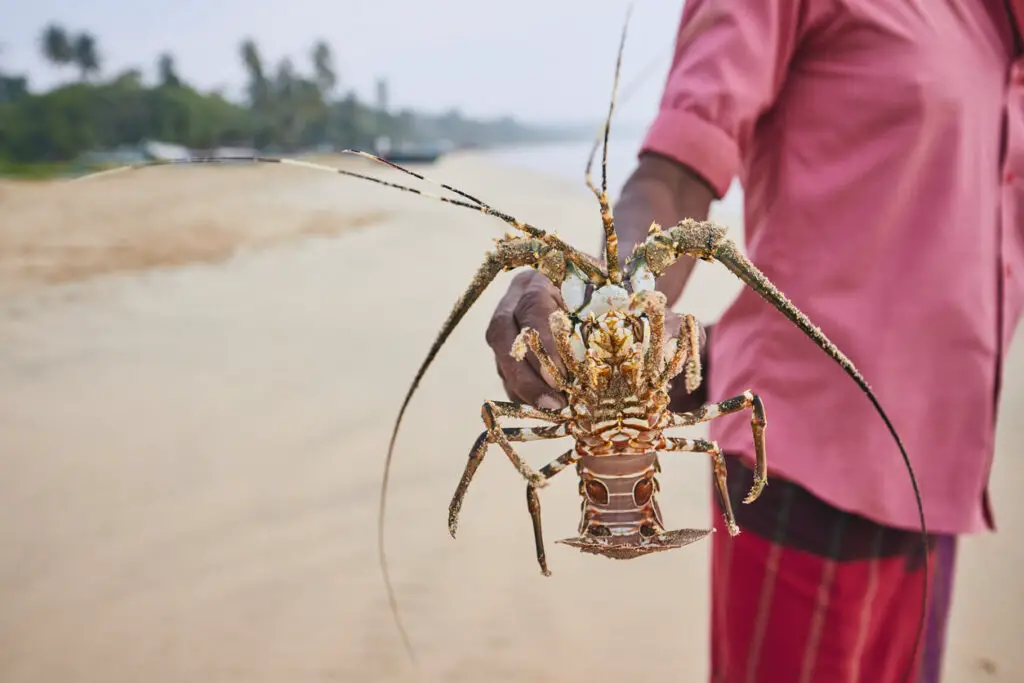Lobster Season in Mexico. What is it? When is it? And why should you care?
Table of Contents
- 1 Lobster Season in Mexico. What is it? When is it? And why should you care?
- 1.1 What kind of Lobsters are found in Mexico?
- 1.2 What is a “veda”?
- 1.3 The veda in Quintana Roo – Updated for Lobster Season 2024
- 1.4 Why am I seeing lobster offered on local menus and in markets during the closed season?
- 1.5 What can YOU do to help preserve the future of Caribbean lobster?
- 1.6 Lobster Season in Mexico: Resources
Lobster fishing is a very important activity for the local economies in many regions of Mexico inlcuding the Mexican Caribbean and there is absolutely a Lobster Season! In fact, there are several different seasons depending on the “zone”, the species of lobster found there, and their respective reproductive seasons.
The closed season for lobster in the Mexican Caribbean runs from March 1 through June 30. It is forbidden to hunt or trap lobster during this period.
Let’s find out more about the lobster season in Mexico and why it is important.

What kind of Lobsters are found in Mexico?
In our region, which includes the waters surrounding Campeche, Yucatan, and Quintana Roo, there are two types of lobster, the Spotted or Guinea Hen Spiny Lobster (Panulirus guttatus) and the Caribbean Spiny Lobster (Panulirus argus).
These lobsters come to the reefs and shallow coastal areas surrounding the Yucatan peninsula in the spring to reproduce. The coral-red eggs, numbering in a quarter to half a million for each reproductive female, are carried on her abdomen, supported by her appendages for a time ranging from 18 to 70 days, depending on the species.
According to the calculations of biologists, very few of these eggs become adults and live on to reproduce. The rest die of “natural causes” or “fishing”. It is estimated that 35,000 lobsters will be lost from the system for each lobster taken during the reproductive season.

During these spring months, the lobster eggs hatch into larvae. At this time they swim freely until, through a series of successive molts, they grow, their exoskeleton becomes heavier and they sink to the bottom of the ocean floor, taking on the appearance of what we recognize as a lobster.
From then on, the growth is slow. Females reach sexual maturity when they are about 3 years old (10 to 12 centimeters). Males mature a little later. If allowed, the spiny lobster can reach a maximum length of 50 centimeters and an age of 20 years.
In order to protect this important species, in Zone V inclusive of Quintana Roo, the fishing ban or “veda” on both species of spiny lobster runs from March 1 through June 30.
What is a “veda”?
A “veda” is an official administrative act through which fishing is prohibited for a specific period of time or in a specific area, established through official norms or agreements, in order to safeguard the reproduction and regeneration of a species. The different kinds of veda, or closed season are as follows:
Permanent:
You may not hunt or harvest the resource at any time during the year for any purpose.
Fixed season:
A ban established for a defined period of time, which repeats every year at the same time.
Variable season:
A ban established for a defined period of time, which is updated every year.
The veda in Quintana Roo – Updated for Lobster Season 2024
You may be interested to know that in Quintana Roo (Caribe Mexicano), we have a fixed season veda for six marine species, pink conch, octopus, spiny lobster, marine shrimp, shark, and grouper.
The veda or closed season for each species is as follows.
Pink Conch:
All of February, May 1st to November 30th.
Lobster:
March 1st to June 30th.
Octopus Maya:
December 16th to July 31st.
Marine Shrimp:
June 1st to October 15th.
Grouper:
February 1st to March 15th.
Shark:
May 1st to June 30th.
In 2009, the band of Central American countries and island nations stretching from Belize to Panama agreed to a collective ban on lobster fishing from March 1 through June 30.
This ban was later adjusted, with the season closing on February 15 and reopening again on June 16, and remains in place today. Lobster season in Mexico is strictly monitored by the government and widely respected by fishermen, seafood retailers, restaurant owners and consumers in these countries.

In Mexico, as far back as 1990, the Mexican Department of Fisheries established the temporary ban on lobster fishing to be from April 5 through July 15 in Quintana Roo and the waters surrounding the Yucatan Peninsula.
The veda was later adjusted to what it is today, Lobster season in Mexico in our zone is now from March 1 through June 30.
Unfortunately, the veda in Mexico, particularly in Cancun and along the Riviera Maya seems to be routinely ignored by visitors clamoring for a taste of fresh Caribbean lobster… at any cost.
Likewise, some retail operators and restaurateurs routinely and flagrantly advertise the sale of lobster, seemingly without repercussion.

What can YOU do to help preserve the future of Caribbean lobster?
Are you a seafood vendor and/or restaurant owner?
The lobster season in Mexico is important. Take a break and respect the veda as it is mandated. When the temporary ban is lifted, throw a party or a festival to open the season! Make it special. Make it a treat. Do it right and have people coming back for more at the right time.
Are you a sport fisherman?
There is no permit/license available for you to hunt or harvest any mollusk or crustacean at any time of year. If you are doing it on your own while snorkeling/free-diving or paying to do it through a sport fishing or spearfishing outfit, you are breaking the law. Period.
Are you a consumer?
The only way to protest is with your wallet. This is a simple matter of supply and demand. If no one is buying the lobster during the off-season, there will be no reason to fish for it illegally.
Are you finding fresh lobster offered at your favorite market or restaurant? Express your disapproval to the owner or manager on duty and refuse your patronage to establishments violating the ban.

Are there restaurants well-funded enough to freeze and bank their lobster to be sold during the off-season? Yes. Others are flying lobster in from other regions that are not closed.
Will you be able to tell the difference, to know for certain the provenance of your lobster? If the answer is no, perhaps it’s best to take a pass.
I know it’s delicious. I know you are only here for a week for Spring Break. I understand you are craving LOBSTAH!! What can you do??
- You can choose to ignore the veda altogether. (Meh)
- You can feign ignorance of the law because you could not find the correct information. (Problem solved)
- You can tell yourself “Just one won’t make a difference”. (It will)
- You can naively believe a seller’s claims that they are only serving male lobsters. (I’m not kidding)
OR…. you can wait a few short months (plan your trips accordingly) and enjoy our famous Caribbean lobster, legally caught and prepared any way you like it during the designated lobster season in Mexico (Zona Caribe Mexicano).
Me? I’m looking forward to my next lobster pizza on Isla Holbox when the season starts up again in July!
Lobster Season in Mexico: Resources
https://www.gob.mx/conapesca/es
https://nube.conapesca.gob.mx/sites/cona/dgop/2022/20220929_CUADRO_VEDAS.pdf
https://www.dof.gob.mx/normasOficiales/6114/sagarpa_06092016/sagarpa_06092016.html
http://www.dof.gob.mx/nota_detalle.php?codigo=4810773&fecha=06/04/1989
https://www.dof.gob.mx/nota_detalle_popup.php?codigo=5336757





1 thought on “Is There a Lobster Season in Mexico – Everything You Need to Know”